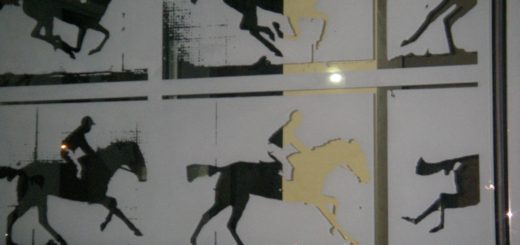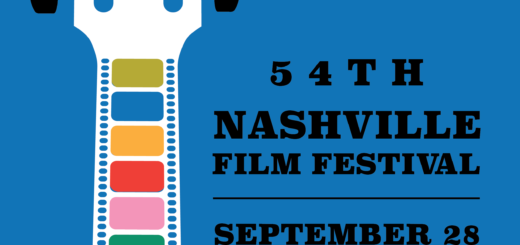Nashville Film Festival: Day Two
Special from Our Man in Nashville, Jason T. Sparks
Nashville, Tennessee, Friday 11 May 2018: This is the second of the four days I will spend at the Nashville Film Festival, and the second of those four days abbreviated by the necessity of the day job. As such, the day job seems to drag on, even though a potluck is in the offing for the day. Life in a call centre is marked and measured by potlucks. This year marks a real departure for me, as I do not do as I always have, which is to grab 50 Munchkins from the Dunking Donuts at the bus terminal downtown on the morning of the potluck. Today, my contribution, from the delicatessen near my house, shall be bacon. (Hand-cured bacon from West Tennessee, this is. If you can think of pork as meth, this was Walter White’s best Heisenberg Blue.) My comrades consume the bacon heartily. Whatever. I have movies to watch.
Finally, I find myself back at the Regal Hollywood 27, and tonight’s fare begins with one of the three films I have most been looking forward to, Jeremy Workman’s documentary, The World Before Your Feet. Feet is the story of one Matt Green, a resident of NYC who had a stable desk job as a civil engineer, until he realized he was a civil engineer at a desk, and as such, bored sans merde. To relieve the boredom, he started by walking across the country, from Far Rockaway Beach in Long island (the place that inspired a love song from The Ramones) to a town in Oregon also named Far Rockaway Beach.
Green enjoyed that cross country walk, but it wasn’t enough, so he decided to walk through New York City. To clarify terms, he plans on walking every street in all five boroughs, as well as every bridge, every park, every pier, and every cemetery. The cross-country trek clocked in at 3000 miles. This project, which he still hasn’t finished, is at least 8000 miles and counting.
Unlike the Bagwell documentary I saw at the festival the day before, this doc is not laden with talking heads. There are a few, mostly Greens family, who are refreshingly supportive. Most of the footage is Green actually walking the walk, throughout his city. Elementary school students ask to join him. A faux-paranoid troll in Bed-Stuy tells him they can’t film his home. He captures freestyle rappers on a street corner, small but dense gardens growing between houses, in alleyways. There’s an equal blend of that which you would expect to see in New York—spots and pathways familiar from television, films and literature– and that which you wouldn’t expect.
Where Workman excels as a documentary maker is how he chooses to frame and organize the material. Each segment begins with a shot of the massive, insanely detailed scale model of NYC built for the 1964 Worlds Fair—the camera zooms in and hovers over the swath of city well be seeing. He also organizes the film into thematic sections, created almost naturally by the collections, if you will, that Green amasses as he walks. In one segment, he shows us Chruchagogues—synagogues long ago sold by decreasing congregations to Christian churches (few of which ever bother, for some reason, to remove the Hebrew lettering and Stars of David from their exteriors). Green also shows us a collection of barbershops whose signs feature the letter Z (cutz, headz, kutz, etc). He also shares a collection of 9/11 memorials, interspersed with Green standing at the site on 9/11/15 when twin lasers are pointed into the sky. That’s not an easy scene to watch, but he can’t not mention it, really. That day is a collective national wound, and we all share et, but et is New York City’s wound to a far greater degree.
World Before Your Feet, to be honest, has in common with the Bagwell doc the fact that its a love letter, albeit too a city, rather than a person. Where it differs is that there are plenty of people (myself included) who are zealous fans of the town, and this film provides all the fab service we could hope for (plus a few scenes thrown in, I suspect, for subsets of NYC fandom.
Presumably to satisfy the crossover between NYC fans and musical theatre geeks, Green includes a walk through Trinity Church’s cemetery (if you’ve seen Hamilton, you’ll understand.)
The film is as much about Green himself as the city, and makes a clear thesis about him, and about all of us watching: if you love a thing, pursue it. From everything else, walk away.
World was the only film on my official agenda for the day, and the only one I indicated I would write about in prior columns. But it wasn’t the only movie I saw that day. After the previous nights mind-blowing Prototype, I stayed after and talked to Jason Shawhan, the curator of the festival’s Graveyard Shift screenings. In between apologies for Prototype (which he needn’t have made), he kept making reference to the next nights Graveyard feature—enough to pique my interest.
My interest was most correctly piqued, as my second Day 2 film was something I will never forget Zerzura. Zersura was made in the African country of Niger—thus increasing the number of films I’ve seen that were made in Niger by 100%–and I’ve never seen anything like it.
Except that… I have. Zerzura, named for a far-off land of gold common to Arab mythology, is a classic Hero’s Journey on the order of Joseph Campbell. We see the same journey, with the same steps, made by Dorothy Gale, Luke Skywalker, Bilbo Baggns, et al. Here, the journeying hero is a nomad named Ahmoudou (portrayed by an actor named Ahmoudou Madassane), who leaves his family and livestock to search for his brother, who has gone to find the titular Zerzura, and vanished. Ahmoudou spends most of his quest alone, except for the intercession at a well of an older man who turns out to be a djnn (AKA gene, AKA Jed, AKA Merln…) who gives Ahmoudou a magic sword. This sword helps defend Ahmoudou from robbers, and ultimately from another djnn, who may well be the gateway to Zerzura, and to Ahmoudous brother.
There is only one negative to this film, and is one you’d have to be dreadfully hard-hearted to hold against it. Niger is not the US or the UK, so a filmmaker there cannot avail himself of Industrial Light & Magic, nor other such concerns as a result, the special effects concerning the sword are, to Western eyes, haunted-house cheesy. That said, nothing about the effects reduces in the least how fascinating it is to watch this universal narrative play out in a culture alien to most American viewers, nor do they reduce how much of a window this film is on a world most viewers will not know (I know I didn’t). Director Christopher Kirkley takes great pans to show us the day-to-day lives of his nomadic subjects, the very specific ways they converse, check in with one another, serve each other tea (apparently a central tenet of this society). Should a festival or art-house near you screen Zerzura, you need to see it. Maybe PBS should find a spot for it? (While I haven’t seen it myself, Shawhan informs me that Kirkley made a nomadic remake of Purple Rain, which was also filmed in Niger.
NEXT—The gig economy! Psychopaths! Punks! And enchanting songs about bathrooms!






















